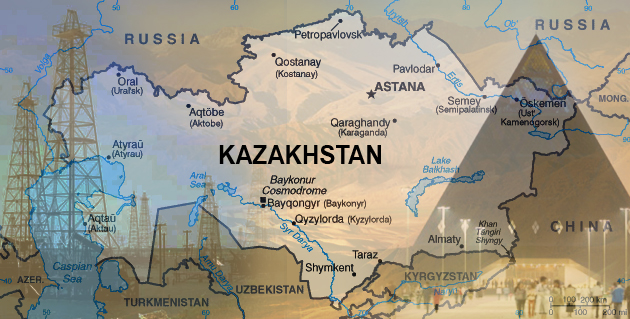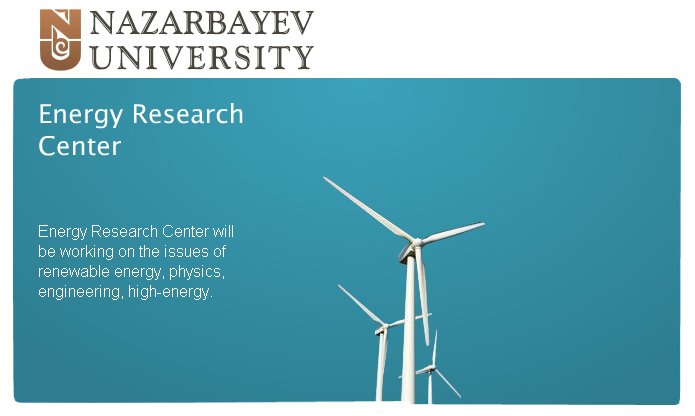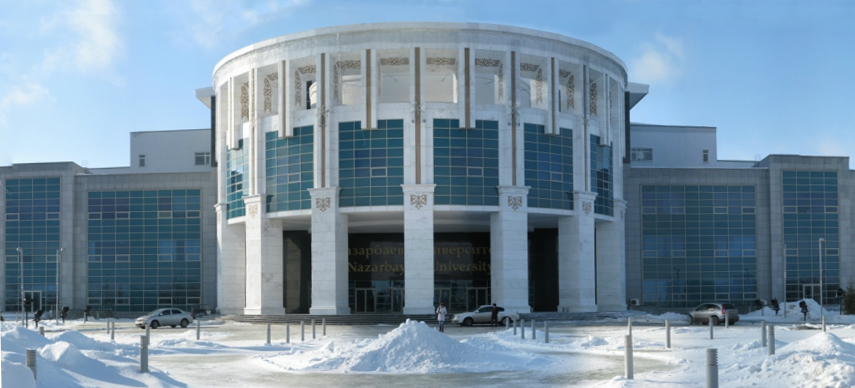 The heart of Central Asia is dominated by the Republic of Kazakhstan, a nation with ambitious plans for the future. Kazakhstan’s robust growth for the past decade has been based on exporting raw materials, notably oil, gas, and metals, including uranium. Making the transition to industrial diversity is a major development goal.
The heart of Central Asia is dominated by the Republic of Kazakhstan, a nation with ambitious plans for the future. Kazakhstan’s robust growth for the past decade has been based on exporting raw materials, notably oil, gas, and metals, including uranium. Making the transition to industrial diversity is a major development goal.
Inside Kazakhstan, the main source of energy is coal. The ninth largest country in the world, Kazakhstan has the world’s seventh most carbon-intensive economy; moreover, it must cope with a grim environmental legacy from its half century as part of the USSR. The new government, signatory to the Kyoto Accords and host to the Central Asian Regional Environmental Center, is sensitive to issues of sustainable growth and the environment.
“Kazakhstan is determined to launch world-class research centers modeled on the best Western institutions as quickly as possible, with an eye to near-term scientific results,” says Steve Gourlay, director of the Lab’s Accelerator and Fusion Research Division, who in the summer of 2010 flew to Kazakhstan’s capital, Astana, in response to an invitation from the newly opened Nazarbayev University (NU) to help found a national Center for Energy Research there. “There’s no doubt the Berkeley Lab name is a draw, since we have a reputation for the best energy science.”
Programs are being coordinated through DOE’s Office of Policy and International Affairs, whose Kazakhstan expert is Michael Cohen. A round dozen U.S. universities, national labs, and other institutions are helping establish centers in such disciplines as energy, life sciences, economics, educational policy, and scientific instrumentation. Gourlay heads Berkeley Lab’s team.
“The Kazakhs want programs they can sink their teeth into, of benefit to the nation,” Gourlay says. “But in the long run, their success depends on home-grown scientific expertise.” At present the most promising students are given scholarships, known as Bolashak (“Future”) Scholarships, for study abroad. But they often stay abroad to work. “There’s no shortage of Kazakh scientists around the world,” Gourlay says. An important goal for the new centers is to provide young scientists with challenging and rewarding work at home.
Under a contract with Nazarbayev University, and working with members of the NU faculty, Berkeley Lab has developed a unique and flexible proposal for the energy research center. It lists a number of “seed” projects, advanced research projects to be led by co-principal investigators from the Lab and NU.
“Each research initiative will have co-PIs working in one-on-one partnerships,” Gourlay explains. “We provide advice, and we’ll send our people to Astana to help set up advanced research labs, train staff, and give student lectures. Meanwhile their people will come here to work with us. We expect these partnerships to continue and perhaps extend our own programs in these areas.”
Gourlay emphasizes that “because we want to give them hooks for future growth, we’re proposing that instead of casting too wide a net they concentrate on doing a few things well.” But there’s no timidity in how energy research is defined. The first proposals range from energy efficiency, solar cells, and carbon sequestration to high-performance computing and plasma physics.
Energy efficiency
The Kazakhstan government has outlined a development strategy that aims to double gross domestic product by 2015 (compared to the early 1990s) while cutting energy use per unit of gross domestic product in half. For energy-efficiency research in the proposed center at Nazarbayev University, Maithili Iyer of the Environmental Energy Technology Division will be the Lab’s co-PI, working with NU’s Almas Shintemerov. The joint research program will emphasize both new policies and new technologies:
- Smart grids, which use two-way digital communication to monitor and control energy delivery and use;
- Efficiency standards and labeling, like Energy Star in the U.S. but tailored to Kazakh conditions and needs; and
- Energy-efficient buildings, a full suite of technologies and approaches for designing, constructing, and operating efficient buildings from scratch and for retrofitting existing buildings.
Berkeley Lab led in developing many of today’s efficiency standards and codes, estimated by the National Research Council to be responsible for $48.5 billion of the $90-billion return from recent energy-efficiency investments of $13 billion. On the technology front, the Lab’s proven innovations include automated Demand Response systems that link electric grids not only with smart buildings but with commercial and industrial plants, agriculture, and water use. The Lab’s expertise in energy efficiency extends beyond the U.S., with successful technical-assistance programs in China, India, Bangladesh, Ghana, Chile, and elsewhere.
Solar cells
The government of Kazakhstan has announced a goal of producing at least five percent of its energy from noncarbon sources by 2024. Direct solar energy will be one important source. In the proposed Center for Energy Research, Biwu Ma of the Materials Sciences Division, working with NU’s Galymzhan Koishiev, will lead a program to develop highly-efficient, new-generation solar cells that can be manufactured cheaply. Several distinct approaches to photovoltaics will be studied:
- Pure organic solar cells, based on new kinds of light-absorbing organic pigments with improved electronic properties, which are also low-cost, nontoxic, abundant, stable, and highly soluble for cheap assembly.
- Low-cost, solid-state, dye-sensitized cells, made using new laser techniques to simplify the manufacturing process of existing titanium-dioxide thin film devices while adding a layer of new organic dyes to improve their electronic performance.
- Optimizing solar cell structures on the nanoscale through nano-imprint technology.
- Large-scale, low-cost production of carbon-based transparent conductor films made with graphene sheets and carbon nanotubes.
Research at Berkeley Lab and in new facilities at Nazarbayev University center will initially be based at the Lab’s Molecular Foundry, with unparalleled access to state-of-the-art instruments, materials, technical expertise, and training.
Carbon storage
Kazakhstan currently produces most of its energy from coal; expanding the economy without increasing carbon emissions may depend on finding ways to capture and store carbon in the form of liquefied CO2 before it gets into the atmosphere. In the proposed center, Krys Avina of the Earth Sciences Division will head Berkeley Lab’s contribution to a research program in carbon sequestration. Research will focus on six areas:
- Characterizing underground storage sites in terms of structure, porosity, and other factors, on scales from the injection-well bore hole to the entire structural basin in which the site is located;
- Monitoring migration of injected liquid CO2 for pressure, temperature, saturation, and degree of trapping;
- Assessing the likelihood and impact of things going wrong;
- Modeling the chosen reservoirs with advanced computer algorithms;
- Gathering empirical data in the laboratory on properties of mixtures of fluids and rocks on a range of scales; and
- Developing theoretical and analytical techniques for understanding large-scale injection of CO2.
Berkeley Lab scientists are world-renowned leaders in the physics and chemistry of geologic carbon sequestration, are pioneers in such fields as microbial ecology and environmental engineering, and are known for developing the most widely used numerical codes for understanding underground fluid transport.
High-performance computing
While computational research and the science of computing itself are crucial to every program proposed for NU’s Center for Energy Research, high-performance computing can lead to better energy technologies in its own right. Kenes Beketayev of Berkeley Lab’s Computational Research Division will lead overall Berkeley Lab participation, with Jonathan Carter of the Lab’s National Energy Research Scientific Computing Center (NERSC) acting as main point of contact for computing science.
Several research strategies will be pursued:
- Materials modeling: computer modeling can improve traditional technologies by understanding materials and their interactions with chemical processes. New materials could allow generators to operate at higher temperatures and pressures and withstand corrosive environments to improve performance, lengthen lifetime, and lower costs.
- Complex systems modeling: techniques like computational fluid dynamics directly impact the design of, for example, quieter wind turbines and more fuel-efficient vehicles. Integrated studies of power grids, including generators, transmission lines, loads, and controls, will influence design of future electrical grids for improved reliability and efficiency.
- Data analytics and visualization: by scanning hundreds of thousands of possible combinations of chemical elements to find new compounds with new properties, analytics can optimize energy technologies. Visualization at the right level can act as “virtual experiments” to keep researchers on the right track.
Berkeley Lab’s leadership in high-performance computer science for over a third of a century has led to remarkable advances in computer science, computational research, and applied mathematics, and will directly benefit the establishment of a computing sciences program for energy research at NU.
Plasma physics
Looking farther into the future, fusion power is a potential source of energy free of pollution, free of carbon emissions, and inexhaustible. One of the most promising paths forward involves beams of charged atomic nuclei. Intense beams of these heavy ions are trained on a stream of targets consisting of layers of hydrogen isotopes, which are continually imploded in repeated “miniature” fusion reactions to yield energy as heat.
Basic knowledge of plasma physics is an essential precursor to any power program. Pavel Ni of Berkeley Lab’s Accelerator and Fusion Research Division will help establish fundamental research in plasma physics at NU’s Center for Energy Research by working with NU personnel to develop novel diagnostic systems for Berkeley Lab’s NDCX-II accelerator.
NDCX stands for Neutralized Drift Compression Experiment, an accelerator uniquely designed to explore techniques for creating and controlling the kind of high-current, high-intensity, highly focused beams of ions needed to deposit maximum energy on a target. Short of pure fusion reactors, the same technique could be used for an interim path to power production using a target of hydrogen fuel withing a thin layer of fissionable material such as uranium; the resulting reaction releases energy partly from fusion and partly from fission.
Tuning and understanding the performance of NDCX-II depends on knowing exactly what’s going on in the plasma of accelerated ions while the beam is compressed and focused, which happens as the beam “drifts” after acceleration. The current method of diagnosis interrupts and disturbs the beam it is measuring. Research will investigate nonintrusive methods of measuring the ion beam with an optical laser. As members of the experimental team, NU personnel will form the core of a new generation of Kazakh scientists whose expertise in plasma physics could lead to energy technologies of the future.
Toward the future
The current seed projects are budgeted from $3 to $4 million per year over a four-year period. Projects will begin with exchanges of personnel between Nazarbayev University and Berkeley Lab shortly after the scope and budgets are approved by NU.
“Once these seed projects are underway we have other research ideas we’ll present,” Gourlay says. These include a wind energy program based on efficient and flexible vertical-axis wind turbines; a program in nuclear reactor safety; and a bioremediation proposal, to be co-PI’d by Tamas Torok of the Earth Sciences Division, aimed at cleaning up the results of past environmental mistakes and discovering novel and useful microbial species.
“We think these projects are the fastest way to build Kazakhstan’s scientific capabilities, which will benefit not only their own country but contribute to development of clean energy globally,” says Gourlay. As of mid-June, 2011, he and his team are in Kazakhstan for the next phase of talks. “We are looking forward to a long and productive collaboration.”

